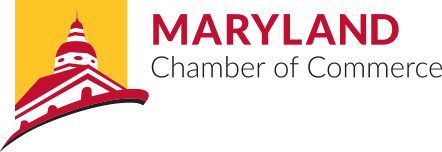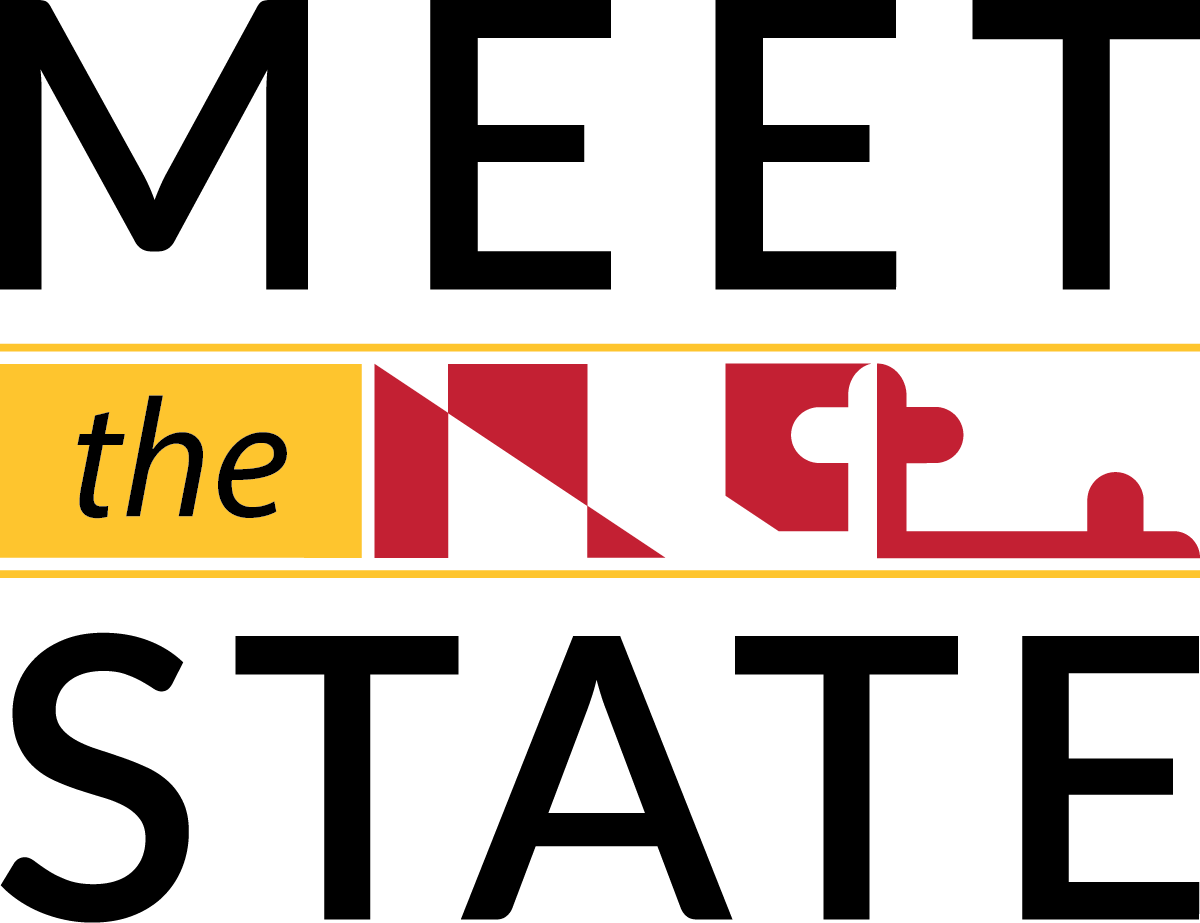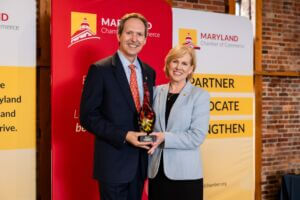Blog
Meet the State 2025 Recap: Building Maryland’s Competitiveness
Jan 21, 2025
The Maryland Chamber of Commerce’s Meet the State 2025, presented by Amazon, brought together a sold-out audience of business leaders, policymakers and advocates to tackle the pressing challenges facing Maryland's economic future. The event underscored the urgency of action for improving Maryland's business environment.
Maryland at a Critical Crossroads
Maryland Chamber President & CEO Mary Kane set the tone for the event with a sobering assessment of the state's competitive position. "Maryland's economy is at a tipping point," Kane emphasized, noting that recent legislation has created unfunded mandates and burdensome costs while the state continues to spend beyond its means.
Kane highlighted concerning statistics about Maryland's current standing:
- Ranked as the 3rd most expensive state to do business
- 46th worst tax climate in the nation
- 47th worst regulatory freedom framework
- Economic growth stalled at 3 percent, lagging behind neighboring states
"Growth is the only path forward," Kane stressed. "It's how we'll address our budget deficit, create jobs, and build a stronger economy. But growth doesn't happen by chance — it requires intentional action."
Economic Outlook: Surprising Strength Amid Uncertainty
The opening address by Tom Barkin, President of the Federal Reserve Bank of Richmond, provided a national economic perspective. Despite challenges, Barkin highlighted the unexpected strength of the U.S. economy in 2024, including a 2.7 percent GDP growth, stable unemployment and a decrease in inflation. "No one predicted this — not even me," Barkin acknowledged, attributing the resilience to a robust consumer base, a stable labor market, and increased productivity from business investments.
State Leadership Perspectives
Senate President Bill Ferguson delivered a candid assessment of Maryland's challenges and opportunities. "This is a moment that requires us to grapple with very hard choices about who we are and who we want to be," Ferguson noted, emphasizing the need to balance fiscal responsibility with strategic investments in Maryland's strengths.
Eric Luedtke, Senior Policy Advisor to Governor Wes Moore, focused on the administration's commitment to economic growth. "We simply cannot afford to keep funding critical programs without growing our economy," he stated, outlining proposals including corporate income tax reduction and investments in high-growth industries to propel the state forward.
Key Priorities for 2025
As the 2025 legislative session approaches, the Maryland Chamber outlined several key focus areas that will shape the future of the state’s economy. These included advocating for responsible spending and targeted tax cuts, ensuring the sustainability of the Transportation Trust Fund, creating balanced policies for emerging technologies like artificial intelligence and pursuing climate goals that do not harm businesses. Other priorities include expanding access to childcare and workforce re-entry initiatives to address labor shortages.
Making Maryland More Competitive for Business
Moderated by Walter Simmons, President & CEO of Employ Prince George's, this panel explored the foundational issues affecting Maryland’s business climate. Maryland Secretary of Labor Portia Wu emphasized that workforce development must start with addressing fundamental barriers like childcare and affordable housing. “If people can’t afford to live here or access childcare, they can’t work here,” she remarked, underscoring the need to create an environment where people can live and work sustainably.
Senator Steve Hershey discussed the implications of proposed tax hikes on high earners, noting that small businesses could be disproportionately affected. He highlighted that ensuring these businesses remain competitive is vital to Maryland’s economic health. In Frederick County, Lara Fritts, Executive Director of the Department of Economic Development, highlighted successful programs like the Bio Boot Camp, which connects job seekers directly to high-demand industries. “These programs are more than just training — they’re about creating pathways to employment,” Fritts explained, showcasing the importance of targeted workforce development initiatives.
A major takeaway was the need for upskilling and reskilling efforts to address workforce shortages. Wu pointed out that Maryland’s labor force participation rate remains lower than pre-pandemic levels, with sectors like biotech, healthcare and cybersecurity experiencing severe talent gaps. Panelists stressed the importance of comprehensive solutions, including targeted training, affordable housing near job centers and expanded childcare options, to bridge these gaps effectively.
Improving Maryland's Transportation Infrastructure
Sponsored by CareFirst BlueCross BlueShield and moderated by Lester Davis, this panel tackled the critical challenges of Maryland’s infrastructure. Delegate Marc Korman, Chair of the House Environment and Transportation Committee, discussed the need for strategic investments in infrastructure to keep pace with the state's growing needs. Delegate Mark Edelson, Vice-Chair of the House Transportation & Environment Subcommittee, emphasized Baltimore City's transportation needs, calling for tailored solutions that address urban and regional challenges.
Buzz Crosby, Regional Vice President at Martin Marietta, as well as Tim Smith, President of the Maryland Asphalt Association, provided insights on project execution and the funding hurdles associated with major infrastructure projects like the Purple Line. Panelists agreed on the necessity of a stable funding model for the Transportation Trust Fund, which is critical to sustaining long-term infrastructure projects. Without adequate investment, Maryland risks falling behind in connecting workers to jobs and businesses to markets.
A key theme was site readiness — ensuring Maryland has shovel-ready industrial and commercial sites to attract new business investments. “We need to ensure that infrastructure investments are in place to attract businesses looking to expand or relocate,” said Fritts, emphasizing the need for better preparation of sites. Senate President Bill Ferguson echoed this sentiment, calling for investments in energy infrastructure, particularly as Maryland transitions from coal-based energy to alternative sources. “Investments in infrastructure are investments in Maryland’s future,” Ferguson stressed, advocating for a long-term view on infrastructure and energy.
Economic Competitiveness and Maryland's Tax Environment
This panel focused on Maryland’s tax environment and its role in business competitiveness. Pat Reynolds from the Council on State Taxation (COST) discussed how Maryland’s tax policy impacts business decisions, stressing the need for a predictable, stable tax environment. "Tax policy uncertainty can be as damaging as high tax rates when businesses make location decisions," Reynolds said, underscoring the importance of creating a tax system that businesses can rely on to plan and grow.
Carl Marrara, Executive Director of the Pennsylvania Manufacturers’ Association, shared insights from Pennsylvania’s tax reform efforts, highlighting how reducing corporate taxes and simplifying the tax code helped the state become more attractive to businesses. He emphasized that businesses tend to follow the "path of least resistance" when choosing locations to invest and operate. He cautioned that if Maryland continues to create barriers — whether through higher taxes or complicated regulations — businesses will find a more business-friendly environment elsewhere.
Dr. Daraius Irani, Vice President of Strategic Partnerships at Towson University, emphasized the need for Maryland to create a balanced tax policy that encourages business investment while generating sufficient revenue. He cautioned, “Maryland’s motto shouldn’t become ‘If we can dream it, we can tax it.’” The panel concluded with a focus on tax certainty and a call for Maryland to adopt tax policies that prioritize long-term growth over short-term gains. The consensus was clear: to maintain competitiveness, Maryland must implement tax reforms that not only stimulate business investment but also ensure sustainable revenue for the state’s future.
Key Takeaways
- Business tax burdens must be reduced to make Maryland more competitive
- Workforce shortages and labor force participation require urgent, innovative solutions
- Strategic, long-term investments in infrastructure and energy are vital to Maryland’s future
- A stable and predictable tax environment is crucial for attracting businesses
Call to Action:
Mary Kane closed the event with a call to action: “We cannot keep casting businesses as the ‘bad guys,’ burdening them with more costs and regulations.” The Chamber committed to providing resources, including the 2025 Economic Competitiveness Redbook, to guide future policy discussions.
The Maryland Chamber of Commerce, representing over 7,000 businesses statewide, remains committed to fostering partnerships that help businesses and communities thrive together. As Kane emphasized, “When businesses, nonprofits and government work together, Maryland thrives.”
Get involved this legislative session: Sign up for Advocacy Alerts
Thanks to Our Sponsors
- Presenting Sponsor: Amazon
- Policy Panel Sponsors: CareFirst BlueCross BlueShield, Employ Prince George's, UnitedHealthcare
- Reception Sponsors: Giant Foods, PSEG
- Luncheon Sponsors: Comcast, Kaiser Permanente, Martin Marietta, Maryland Realtors
- Supporting Sponsors: Johns Hopkins University & Medicine, Prince George's Chamber of Commerce



Why Businesses Like Yours Trust Us to Deliver Results